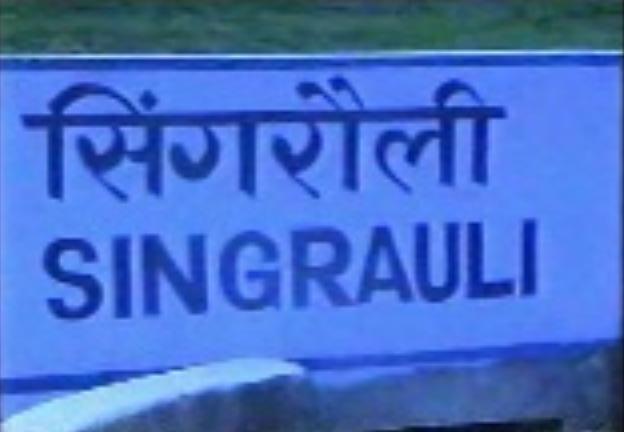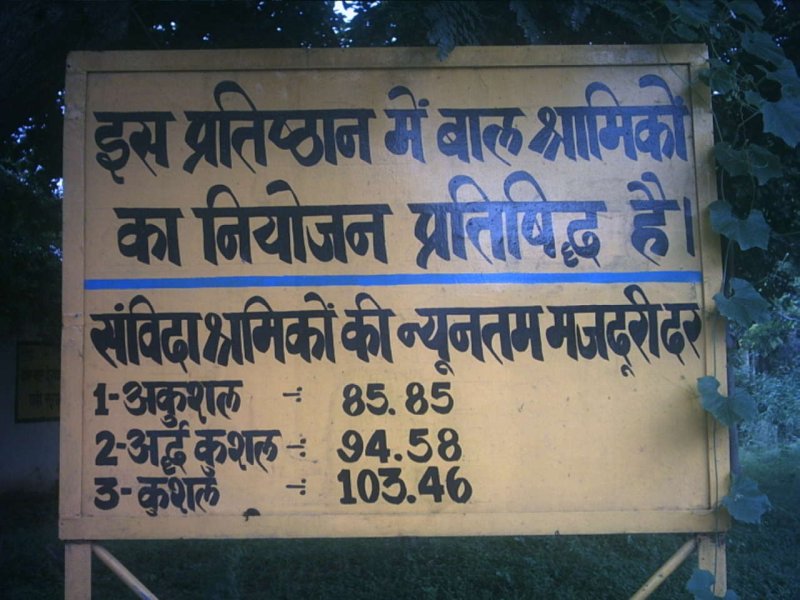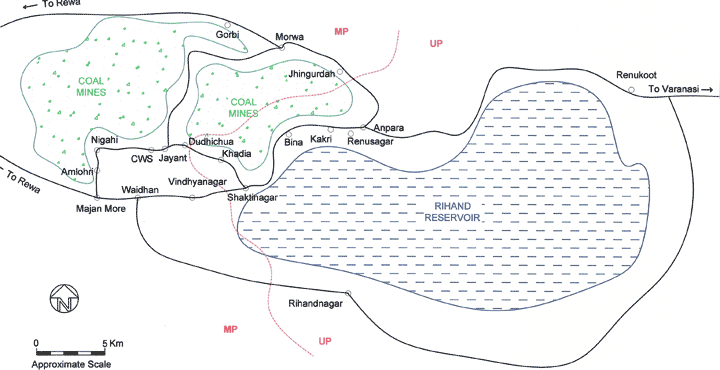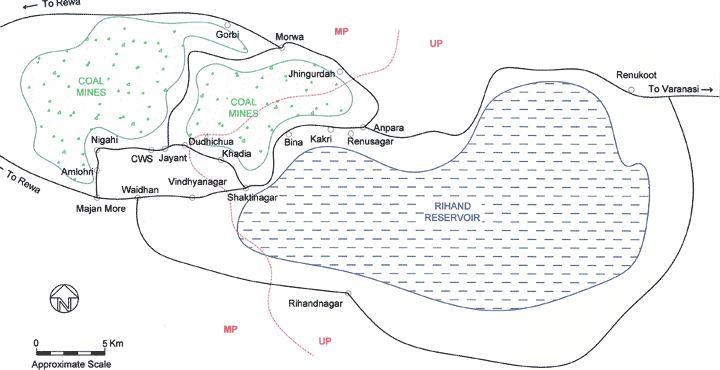English Singrauli dying4development - mp3 5.0
Hindi Singrauli dying4development - mp3 5.0
 English Singrauli dying4development
- video/x-msvideo 5.0
English Singrauli dying4development
- video/x-msvideo 5.0
 Hindi Singrauli dying4development
- video/x-msvideo 5.0
Hindi Singrauli dying4development
- video/x-msvideo 5.0






Continious displacement over the last 30 years has destroyed a once symbiotic relationship between man and environment, tribal communities have been forced into the contract labour market, a position exploited by the multinatioanl corporations and state governments which maintain these people's squallor and poverty.
The estimated 200,000 contract labourers are essential to keep the the mining and power production running. Technically though, they do not exist. They are employed by crooked subcontractors for 50 rs a day (60p) but the contractor takes 32 rs from each worker (for the privilege of doing the most dirty and dangerous work). Anyone complaining about corruption or conditions is not hired again.
Death is a daily reality for the people of Singrauli. The living conditions faced by displaced peoples and contract labourers appeaerd to us like open sewers. The crowded wooden build 'Bustees' (shanty communities) are unsafe and unsanitary, people told us that 1 or 2 children die a month from diseases and there are regular deaths from fires. But this is just the beginning.
The mining and power projects are poisoning the environment. Every day 60,000 tonnes of flyash is dumped into the Rihand reservoir contaminating the water supply. The whole area is choked as flyash is transported in open-top trucks. Old landfill sites can be seen crumbling under the weight of the ever-mounting flyash. When we fisrt approached the Rihand dam we thought it was a sandy wasteland, only to be told “that white stuff, is water”.
Singrauli emits 175kg of mercury every year and ranks among the top ten polluting areas in India.
People are dying from illness related to mercury and lead poisoning, Mr Agarawal (seen in the film) told us after the interview that his 30-year-old daughter had died the previous month from liver cancer. The majority of people have gastrointestinal problems. There are no figures available, no acknowledgment or health monitoring of the inhabitants of Singrauli. No sign of WHO, no advocacy for these victims of development.
The temperature of this area is 5% higher than surrounding areas, thunder and lightning occurs almost daily, this we were told is due the output of the power plants. It has been estimated that this area accounts for 0.5% of total CO2 output of the world each year. Nobody seems to be interested.
The World Bank continues to fund new projects despite the destruction caused by existing ones. The World Bank have been found to have broken their own policies for the Rehabilitation and Resettlement of Indigenous Peoples. In this film, you will see the World Bank resettlement project in Singrauli.
World Bank projects have no regard for humanity or respect for our world environmentally.
The World Bank Destroys.
Destroy the World Bank.
More info:
 http://www.singrauli.com/
http://www.singrauli.com/  http://www.pollutedplaces.org/region/south_asia/India/singrauli.shtml
http://www.pollutedplaces.org/region/south_asia/India/singrauli.shtml  http://www.cpcb.nic.in/app2001find.htm
http://www.cpcb.nic.in/app2001find.htm  http://www.ciel.org/Publications/prsing.html
http://www.ciel.org/Publications/prsing.html  http://multinationalmonitor.org/hyper/mm1295.06.html
http://multinationalmonitor.org/hyper/mm1295.06.html  http://hrw.org/english/docs/1998/04/21/india1083.htm
http://hrw.org/english/docs/1998/04/21/india1083.htm  http://www.geocities.com/mpeb132kvsubstationmorwa/singrauli.html
http://www.geocities.com/mpeb132kvsubstationmorwa/singrauli.html local contacts:
 srijanlokhisamit@yahoo.com
srijanlokhisamit@yahoo.com  neetisamvad@rediff.com
neetisamvad@rediff.com  newskootchakra@yahoo.com
newskootchakra@yahoo.com  mahendra443@hotmail.com
mahendra443@hotmail.com  ashoktiwari@ashoktiwari.com
ashoktiwari@ashoktiwari.com New film by UK's munki/trollyd collective with the help of local activists.
 munki@riseup.net
munki@riseup.net  trollyd@burngreave.net
trollyd@burngreave.net  http://www.burngreave.net/~trollyd/
http://www.burngreave.net/~trollyd/ here are various media formats
Audio:
Hindi 3.5MB
English 3.4MB
Video:
Hindi: 27MB
English: 41MB
Ammendment:
In the discussion with Mr Agarawal the amount of coal used daily is 1.5 million tonnes not 1.5 tonnes as stated.

 e-mail:
e-mail:
 Homepage:
Homepage:

Comments
Display the following comment